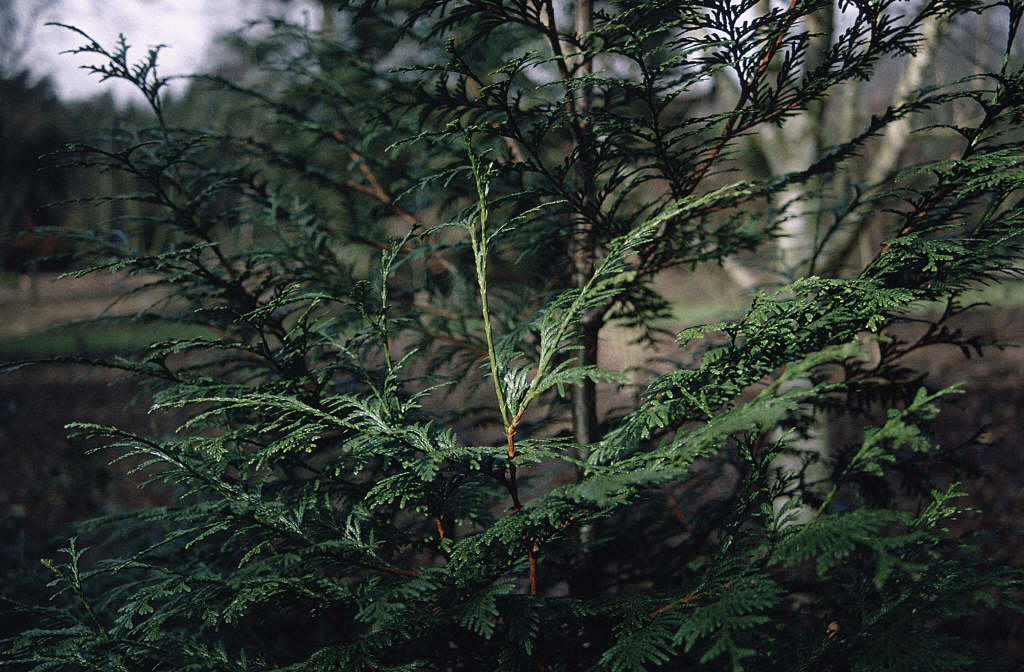Thuja plicata 'Atrovirens'
western red cedar 'Atrovirens'
A large, evergreen, narrowly-pyramidal tree reaching an ultimate height of 20-35m. Aromatic, glossy, scale-like, sharply-pointed very dark green leaves are held in large drooping sprays on spreading branches

Buy this plant
Size
Ultimate height
Higher than 12 metresTime to ultimate height
20–50 yearsUltimate spread
Wider than 8 metresGrowing conditions
Moisture
Moist but well–drainedpH
Acid, Alkaline, NeutralColour & scent
| Stem | Flower | Foliage | Fruit | |
| Spring | Green | |||
|---|---|---|---|---|
| Summer | Green | |||
| Autumn | Green | |||
| Winter | Green |
Position
- Full sun
Aspect
West–facing or South–facing or East–facing
Exposure
Exposed or Sheltered Hardiness
H6Botanical details
- Family
- Cupressaceae
- Native to GB / Ireland
- No
- Foliage
- Evergreen
- Habit
- Bushy, Columnar upright
- Potentially harmful
- Harmful if eaten, skin allergen. Wear gloves and other protective equipment when handling
- Genus
Thuja are fast-growing evergreen trees of narrowly conical habit, with flat sprays of tiny, aromatic, scale-like leaves and small knobbly cones
- Name status
Accepted
How to grow
Cultivation
Grow in moist but well-drained soil in full sun with shelter from cold, drying winds. See conifer cultivation for further advice
Propagation
Propagate by semi-ripe cuttings in late summer
Suggested planting locations and garden types
- Architectural
- Cottage and informal garden
- Low Maintenance
- Hedging and screens
Pruning
No pruning required; trim hedges in spring and late summer
Pests
May be susceptible to scale insects and conifer aphid
Diseases
May be susceptible to diseases including honey fungus, Phytophthora root rot and thuja blight. See conifers: brown patches for further advice
Get involved
The Royal Horticultural Society is the UK’s leading gardening charity. We aim to enrich everyone’s life through plants, and make the UK a greener and more beautiful place.